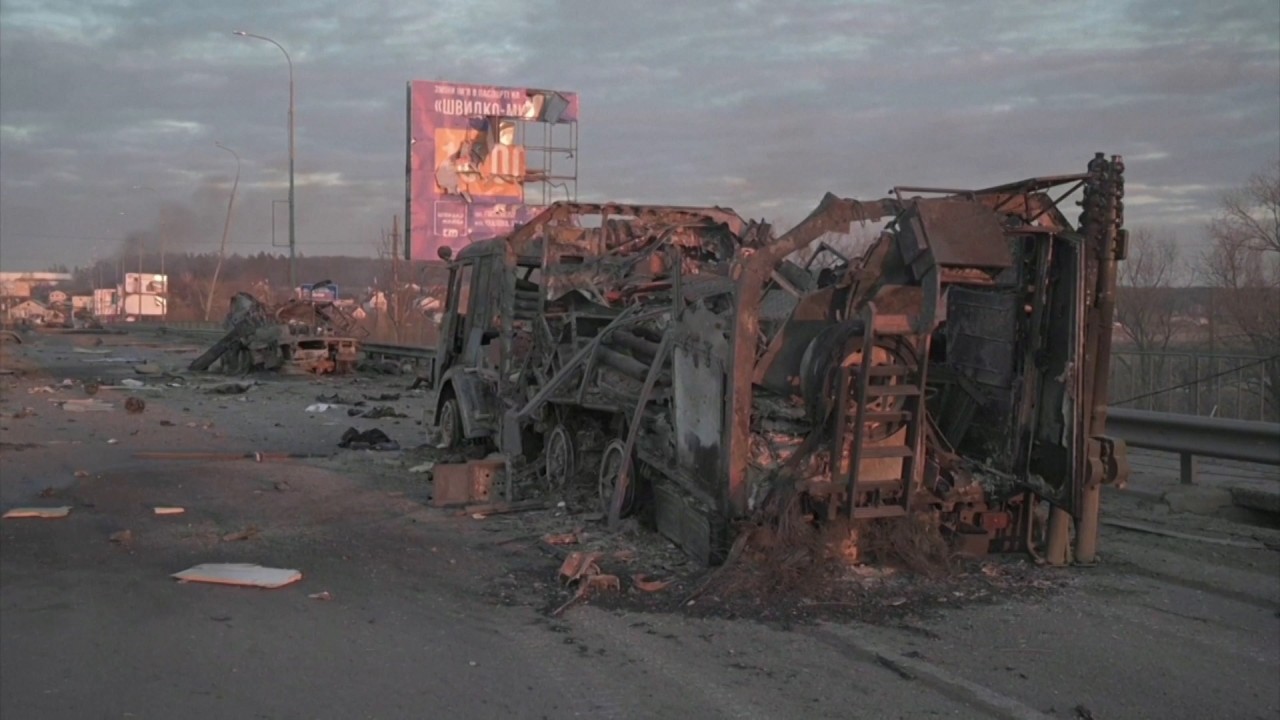
Explainer | Russia is accused of using ‘vacuum bombs’ in Ukraine. Why are they so feared?
- Thermobaric weapons suck up oxygen, then create a blast wave that ‘obliterates’ victims and is especially destructive in enclosed spaces
- Their use in Ukraine to attack a preschool has not been confirmed, but if true, it could ‘potentially be a war crime’, the White House says
Russian forces have been accused of using the widely banned and dangerous weapons known as vacuum bombs that “obliterate” their victims.
Amnesty International accused Russia of using vacuum bombs, or thermobaric weapons, to attack a preschool in northeastern Ukraine while civilians took shelter inside. CNN reported that one of its teams had spotted a Russian thermobaric multiple rocket launcher near the Ukrainian border early on Saturday afternoon.
Oksana Markarova, Ukraine’s ambassador to the United States, told reporters after meeting with members of the US Congress on Monday that Russia had used a thermobaric weapon.
“They used the vacuum bomb today,” Markarova said after a meeting with lawmakers. “The devastation that Russia is trying to inflict on Ukraine is large.”
White House press secretary Jen Psaki said she had seen reports but did not have confirmation that Russia had used such weapons.
Psaki added that if it was true, “it would potentially be a war crime”, Reuters reported.
How do ‘vacuum bombs’ work?
The thermobaric weapon, also known as a fuel-air explosive, uses a container of fuel and two separate explosive charges, according to a study by Human Rights Watch.
The weapon is fired or dropped, and the first explosive charge spreads the fuel in a cloud that sucks up oxygen and then flows “around objects and into structures”. As the fuel cloud spreads, the second charge detonates. The explosion creates a blast wave that is most destructive in enclosed spaces, buildings and foxholes.
Amnesty International said international humanitarian law prohibits the use of inherently indiscriminate weapons such as cluster munitions and thermobaric weapons.
FOAB vs MOAB: Russia’s answer to America’s ‘mother of all bombs’
Have they been used before?
In 2000, Human Rights Watch reported and condemned Russia’s suspected use of the weapons in Chechnya, a Russian republic, as “a dangerous escalation” with “important humanitarian implications”.
In August 1999, the Russian military reportedly used FAE bombs against the Dagestani village of Tando, Russia.
The US used similar thermobaric bombs in Islamic State group caves in Afghanistan in 2017, The New York Times reported.
How dangerous are they?
A CIA study said the weapons are “prone to indiscriminate use”, and people closest to the explosion are “obliterated”.
The pressure wave of the vacuum bomb is said to kill its victims by “rupturing lungs”, and if the bomb does not detonate, the victims will inhale the burning fuel, according to a CIA study.
“Since the most common FAE (fuel-air explosive) fuels, ethylene oxide and propylene oxide, are highly toxic, undetonated FAE should prove as lethal to personnel caught within the cloud as with most chemical agents,” the study said.
Biden says Americans shouldn’t worry about nuclear war after Putin order
In addition, when multiple thermobaric weapons are detonated, they reinforce one another and create a stronger, more dangerous blast, the Human Rights Watch reported.
People close to the blast can experience injuries “including burst eardrums and crushed inner ear organs, severe concussions, ruptured lungs and internal organs, and possibly blindness,” according to the study.


